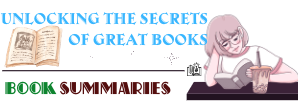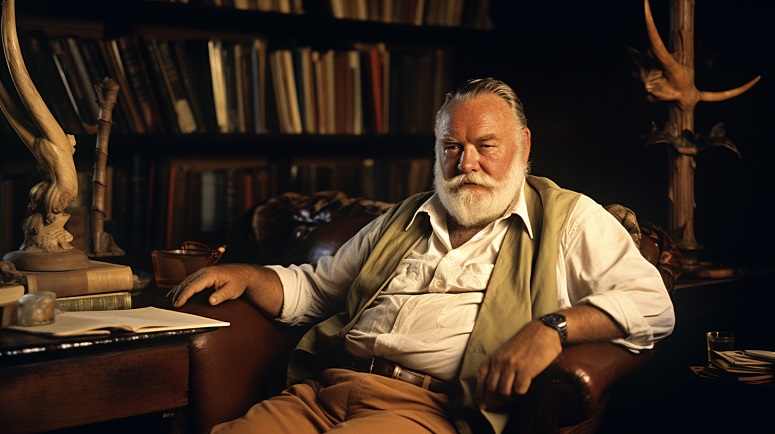Ernest Hemingway: A Literary Legend and Adventurous Life
Ernest Hemingway, born on July 21, 1899, in Oak Park, Illinois, was an American novelist and short-story writer whose impact on modern literature is immeasurable. Known for his distinctive writing style characterized by concise and powerful prose, Hemingway’s works explored themes of war, love, loss, masculinity, and the human condition. His extraordinary career spanned several decades and included acclaimed novels such as “The Old Man and the Sea,” “For Whom the Bell Tolls,” and “A Farewell to Arms.”
Hemingway’s life was a reflection of his adventurous spirit. He volunteered as an ambulance driver during World War I in Italy before becoming a war correspondent during the Spanish Civil War.
Introducing Ernest Hemingway – The Iconic Writer
Ernest Hemingway, born on July 21, 1899, in Oak Park, Illinois, became one of the most influential and renowned American writers of the 20th century. Known for his concise yet powerful writing style and his adventurous lifestyle, Hemingway’s works often explored themes of war, love, masculinity, and the human condition. During World War I, he served as an ambulance driver in Italy before joining the war effort as a reporter. These experiences would later shape much of his writing.
Hemingway’s literary career began to flourish in the 1920s when he moved to Paris and joined a group of expatriate writers known as the “Lost Generation.” His debut novel, “The Sun Also Rises,” published in 1926, reflected this period of excess and disillusionment that followed World War I. Over the years, Hemingway produced several novels and short stories that would contribute greatly to American literature. Some of his notable works include “A Farewell to Arms,” “For Whom the Bell Tolls,” and his Pulitzer Prize-winning novella “The Old Man and the Sea.”
Ernest Hemingway‘s impact on literature cannot be overstated. He revolutionized modern fiction by employing a stripped-down writing style characterized by short sentences devoid of unnecessary adjectives or embellishments. This approach mirrored his own personality – direct and unpretentious – making him an enduring literary icon whose influence can still be seen today.
Early Life:
Ernest Hemingway was born on July 21, 1899, in Oak Park, Illinois. He was the second of six children and grew up in a middle-class family. His father was a doctor, and his mother was an opera singer. From a young age, Hemingway showed a love for outdoor activities such as fishing and hunting.
As a teenager, Hemingway attended Oak Park and River Forest High School where he excelled academically and participated in various sports. In 1917, after graduating from high school, he worked as a reporter for the Kansas City Star newspaper. This experience would later influence his concise writing style characterized by short sentences and direct language.
During World War I, Hemingway volunteered as an ambulance driver for the Red Cross in Italy. Unfortunately, he was injured while serving and spent several months recovering in a hospital in Milan. This period had a profound impact on him both emotionally and physically but also provided inspiration for some of his future writings based on war experiences.
Overall, Ernest Hemingway‘s early life laid the foundation for his adventurous spirit and influenced much of his writing style throughout his career.
Hemingway’s childhood and early influences
Hemingway’s childhood and early influences played a significant role in shaping his writing style and themes. Born on July 21, 1899, in Oak Park, Illinois, Hemingway grew up in a conservative middle-class family. His father was a physician who instilled in him a love for nature and outdoor activities such as hunting and fishing. These experiences would later become recurring motifs in many of his works.
Moreover, Hemingway’s mother nurtured his artistic side by encouraging him to pursue literature and music. She exposed him to classic literature from an early age, introducing him to the works of writers like Mark Twain and Charles Dickens. This exposure not only sparked Hemingway’s interest in storytelling but also influenced his lean prose style characterized by simplicity and directness.
Furthermore, Hemingway’s childhood was marked by the influence of World War I. As a teenager, he worked as a reporter for The Kansas City Star newspaper where he honed his writing skills further. However, it was during this time that he also witnessed the impact of war firsthand when he volunteered as an ambulance driver on the Italian frontlines during World War I. This experience would deeply affect him emotionally and shape much of his later work that explored themes of war trauma, masculinity, and existentialism.
Overall, Hemingway’s formative years were filled with diverse influences that laid the foundation for his distinctive writing style and thematic preoccupations throughout his career.
Writing Career:
Ernest Hemingway is widely regarded as one of the greatest American writers of the 20th century. Born in 1899 in Illinois, Hemingway developed a passion for writing at an early age. After serving as an ambulance driver during World War I, he moved to Paris and became part of the expatriate community known as the “Lost Generation.” It was during this time that Hemingway honed his craft and wrote some of his most famous works.
Hemingway’s writing career took off with the publication of his debut novel, “The Sun Also Rises,” in 1926. This novel, which portrayed disillusioned post-war American expatriates living in Europe, established Hemingway’s distinct style characterized by concise prose and sparse dialogue. He went on to write several other novels, including “A Farewell to Arms” and “For Whom the Bell Tolls,” both of which explored themes such as war, love, and masculinity.
Throughout his career, Hemingway received numerous accolades for his work. He won the Pulitzer Prize for Fiction in 1953 for his novella “The Old Man and the Sea” and was awarded the Nobel Prize in Literature in 1954. Despite struggling with personal demons throughout his life, Hemingway’s contribution to literature remains influential and continues to inspire aspiring writers around the world.
Exploring Hemingway’s literary achievements and style
Ernest Hemingway, known for his distinct writing style and literary achievements, was one of the most influential American writers of the 20th century. Born in 1899 in Oak Park, Illinois, Hemingway began his career as a journalist before transitioning into fiction writing. He drew inspiration from his own experiences as a World War I ambulance driver and war correspondent during the Spanish Civil War. Hemingway’s succinct prose and minimalist style revolutionized modern literature, influencing generations of writers to come.
Hemingway’s literary achievements are evident in his notable works such as “The Sun Also Rises,” “A Farewell to Arms,” and “For Whom the Bell Tolls.” These novels explore themes of love, war, masculinity, and existentialism with raw intensity. His characters often embody the stoic hero archetype while grappling with the complexities of life. Hemingway’s ability to capture moments of profound human emotion through concise yet evocative language is what sets him apart as a writer.
Furthermore, Hemingway’s unique writing style further solidified his place in literary history. His prose is characterized by short sentences and precise descriptions that create vivid imagery for readers. Known for his economical use of words, Hemingway believed in omitting unnecessary details to convey deeper meaning within each sentence. This pared-down approach allows readers to feel fully immersed in Hemingway’s narratives while leaving room for interpretation and introspection.
Personal Life:
In addition to his prolific writing career, Ernest Hemingway‘s personal life was equally fascinating and eventful. Known for his adventurous spirit, Hemingway enjoyed many pursuits outside of his writing. He was an avid sportsman and loved hunting, fishing, and bullfighting. These activities not only provided him with a means of relaxation but also served as inspiration for some of his most memorable literary works.
Hemingway’s personal life was also marked by several tumultuous relationships. He had four marriages throughout his lifetime, each ending in divorce or separation. His stormy love affairs often mirrored the intensity and passion portrayed in his novels. Notably, one of the most well-known romances in Hemingway’s life was with war correspondent Martha Gellhorn, whom he met during the Spanish Civil War. Their passionate relationship fueled their respective careers and resulted in some remarkable collaborations.
Despite the ups and downs of his personal life, Ernest Hemingway‘s experiences undoubtedly shaped him as both a writer and an individual. The adventures he pursued and the relationships he formed all contributed to the depth and authenticity found within his literary works that continue to captivate readers worldwide.
Unraveling the highs and lows of his personal relationships
Ernest Hemingway, renowned for his literary prowess, had a personal life filled with both highs and lows in his relationships. Known for his charismatic charm and magnetic personality, Hemingway formed numerous romantic connections throughout his life. From his four marriages to countless affairs, Hemingway’s love life was often tumultuous and complicated.
One of the most significant relationships in Hemingway’s life was with Hadley Richardson, his first wife. Their union was marked by deep affection and shared artistic aspirations; however, it ultimately succumbed to the strains of infidelity and Hemingway’s growing restlessness. This pivotal period in Hemingway’s life inspired some of his most celebrated works, such as “The Sun Also Rises” and “A Moveable Feast,” which portrayed the complexities of love and longing amidst a backdrop of hedonism.
Despite the turbulence that characterized many aspects of Hemingway’s personal relationships, there were moments of joy too. His fourth marriage to Mary Welsh brought stability into his later years. Together they traveled extensively, immersing themselves in new cultures while nurturing their mutual passion for adventure. However, even this relationship faced challenges as Hemingway battled declining mental health that impacted their bond.
Ultimately, unraveling the highs and lows of Ernest Hemingway‘s personal relationships provides valuable insight into both the complexities of human connection and its influence on creative output – a theme that echoes through much of his remarkable body of work.
Adventures and Travels:
Ernest Hemingway, one of the most renowned American writers, was not only recognized for his literary accomplishments but also for his adventurous and globe-trotting lifestyle. Throughout his life and career, Hemingway embarked on various adventures and travels that greatly influenced his writing. One of his most notable expeditions was his time spent in Paris during the 1920s, where he immersed himself in the vibrant bohemian culture of the city’s literary circles. This experience had a profound impact on Hemingway’s writing style, as it allowed him to develop a unique storytelling approach characterized by concise yet powerful prose.
Another significant adventure in Hemingway’s life was his participation in World War I as an ambulance driver for the Italian army. Serving on the front lines exposed him to the horrors of war and provided inspiration for some of his most enduring works, such as “A Farewell to Arms.” Hemingway’s experiences during this period shaped not only the themes explored in his writings but also influenced his perspective on courage, honor, and masculinity.
Hemingway’s insatiable thirst for adventure took him across continents and oceans. From deep-sea fishing trips off the coast of Cuba to safaris in Africa or bullfighting spectacles in Spain, he sought out exhilarating experiences that fueled both his personal growth and creative output.
Highlighting Hemingway’s love for adventure and exploration
Ernest Hemingway, a renowned American writer, is often celebrated for his love of adventure and exploration. This affinity for the unknown can be traced back to his early years, when he served as an ambulance driver during World War I. The war exposed Hemingway to the harsh realities of life and fueled his desire to seek out new experiences.
Throughout his writing career, Hemingway’s passion for adventure is evident in many of his iconic works. In “The Old Man and the Sea,” he takes readers on a journey with an aging fisherman battling against nature’s forces in pursuit of an elusive marlin. Similarly, in “For Whom the Bell Tolls,” Hemingway transports readers into the heart of the Spanish Civil War as they follow Robert Jordan’s mission behind enemy lines.
Hemingway himself embarked on numerous expeditions that shaped his understanding of different cultures and landscapes. His travels across Europe, Africa, and South America provided him with firsthand experiences that would later find their way into his stories. It was this thirst for exploration that allowed Hemingway to capture the essence of adventure so vividly in his writing and make him one of literature’s most beloved authors.
Impact on Literature:
Ernest Hemingway, an iconic figure in American literature, had a profound impact on the literary world. Known for his simple yet powerful writing style, Hemingway revolutionized the way authors approached storytelling. His concise sentences and minimalistic descriptions became a hallmark of modernist literature and influenced generations of writers to come.
Hemingway’s personal experiences greatly shaped his writing style. Having served as an ambulance driver during World War I and later as a war correspondent, he drew from these experiences to create authentic and emotionally charged narratives. His works often explored themes such as masculinity, love, war, and death with an unmatched intensity that resonated deeply with readers.
Hemingway’s impact on literature is not only evident in his own body of work but also in the writers who followed in his footsteps. Many authors were inspired by his economical use of language and powerful storytelling techniques. His influence can be seen in contemporary writers like Cormac McCarthy and Jhumpa Lahiri, who strive to capture the essence of human experience through simple yet evocative prose. Overall, Hemingway’s contributions to literature continue to shape the way we approach storytelling today.
Examining the lasting impact of Hemingway’s works
Ernest Hemingway, one of the most influential writers of the 20th century, left a lasting impact through his works that continues to resonate with readers today. Born on July 21, 1899, in Oak Park, Illinois, Hemingway experienced firsthand the horrors of war while serving as an ambulance driver during World War I. This experience greatly influenced his writing style and subject matter.
Hemingway’s career flourished with the publication of his debut novel “The Sun Also Rises” in 1926, which vividly depicted disillusioned expatriates living in post-war Europe. His concise and direct writing style characterized by short sentences and simple language became known as the “Iceberg Theory.” This minimalist approach allowed readers to infer deeper meanings beneath the surface of his stories.
Throughout his career, Hemingway wrote several other notable works such as “A Farewell to Arms,” “For Whom the Bell Tolls,” and “The Old Man and the Sea,” which earned him both critical acclaim and popular success. His ability to capture themes of masculinity, bravery, love, loss, and survival resonated deeply with readers across generations. Today, Hemingway’s influence can be seen in contemporary literature as many authors continue to draw inspiration from his distinctive style and exploration of universal human experiences.
Conclusion:
In conclusion, Ernest Hemingway‘s life and career were marked by both success and tragedy. He rose to prominence as a literary icon of the 20th century, known for his distinctive writing style and adventurous spirit. Hemingway’s early years were filled with excitement and risk-taking, as he served as an ambulance driver during World War I and participated in bullfighting in Spain.
However, as time went on, Hemingway faced personal struggles that ultimately took a toll on his mental health. His experiences in war deeply affected him, leading to bouts of depression and alcoholism. Tragically, Hemingway took his own life at the age of 61.
Despite the challenges he faced, Ernest Hemingway left behind a legacy that continues to resonate with readers worldwide. His novels such as “The Old Man and the Sea” and “A Farewell to Arms” are renowned for their honest portrayal of human emotions and their exploration of themes such as masculinity and existentialism. Through his writing, Hemingway captured the essence of the human condition, leaving an indelible mark on literature that will endure for generations to come.
Reflecting on Ernest Hemingway’s enduring legacy
Ernest Hemingway, a literary icon of the 20th century, left an indelible mark on the world of literature through his distinctive writing style and powerful storytelling. Born in 1899 in Oak Park, Illinois, Hemingway developed a passion for writing from an early age. He served as an ambulance driver during World War I, where he witnessed firsthand the horrors and futility of war. This experience would later influence his writing and contribute to his unique portrayal of masculinity and existentialism.
Hemingway’s career flourished in the 1920s with the publication of his debut novel “The Sun Also Rises” (1926), which introduced readers to his stripped-down prose and unadorned dialogue. His subsequent works, such as “A Farewell to Arms” (1929) and “For Whom the Bell Tolls” (1940), further solidified his reputation as a master storyteller who captured both the beauty and brutality of human existence.
Despite achieving remarkable success throughout his career, Hemingway also battled personal demons that ultimately led to tragedy. He struggled with depression, alcoholism, and failed relationships that haunted him until his death by suicide in 1961. Yet even in death, Hemingway’s legacy endures as one of America’s most celebrated authors whose minimalist style continues to inspire generations of writers.












